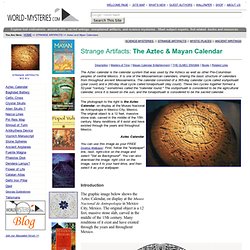

Gordian Knot. Gordian Knot Alexander Cuts the Gordian Knot The Gordian Knot is a legend of Phrygian Gordium associated with Alexander the Great.

It is often used as a metaphor for an intractable problem (disentangling an "impossible" knot) solved easily by cheating or "thinking outside the box" ("cutting the Gordian knot"). The myth it refers to is associated in legend with Alexander the Great. According to a Phrygian tradition, an oracle at Telmissus, the ancient capital of Phrygia, decreed to the Phrygians, who found themselves temporarily without a legitimate king, that the next man to enter the city driving an ox-cart should become their king. Gordias, a poor peasant, happened to drive into town with his wife, both riding on an ox-cart, and he was declared king. The ox-cart, often depicted as a chariot, was an emblem of power and constant military readiness. In 333 BC, wintering at Gordium, Alexander attempted to untie the knot. Unlike fable, true myth has few completely arbitrary elements. Sacred Geometry: Flower of Life - World Mysteries - Strange Artifacts.
Sacred Geometry - Flower of Life By Andrew Monkman I believe the complete ancient flower of life is an inter-dimensional tool, a portal, a stargate, a window into what some call the inter space plains.

The original flower of life (found on several pillars within "the Osireion" at abydos in Egypt) is incomplete, because it is only the first layer of three (pic1+2). 1. Flower of Life carved on a temple wall The Temple of Osiris at Abydos, Egypt. 2. The complete flower has the other two layers added, making it three dimensional (pic3). 3. What appears is a reptilian entity. Flower of Life - Beijing, China The second being is the Chinese dragon ( the fu dog). You may know that the complete flower contains the kabbalah`s tree of life, the fruit, the egg and the seed of life (pic. 4 & 5). 4. 5. The complete flower also contains the three dimensional metatron cube (pic6), which holds all the Platonic solids (pic7). 6. 7. 8. Strange Artifacts - Mayan and Aztec Calendars. Did You Know?

A particular tzolkin/haab date recurs every 18,980 days, whereas a long count date (assuming that the long count starts over at 0.0.0.0.0 on reaching 13.0.0.0.0) recurs every 1,872,000 days (once in 5,125.37 years). The combination of a long count date and a tzolkin/haab date occurs only once every 136,656,000 days (approximately 374,152 years or 73 Maya eras). The Mayan Calendar conversion applet below gives the following dates: Start of the Mayan calendar (long count cycle): 0.0.0.0.0 [ 4 Ahau 8 Cumku ] is Aug 10, 3113 BC End of the Mayan calendar (long count cycle): 13.0.0.0.0 [ 4 Ahau 3 Kankin ] is Dec 21, 2012 AD The Aztec Calendar was basically similar to that of the Maya.
The ritual day cycle was called Tonalpohualli and was formed, as was the Mayan Tzolkin, by the concurrence of a cycle of numerals 1 through 13 with a cycle of 20 day names, many of them similar to the day names of the Maya. The tonalpohualli was the 'counting of days.' Mayan Calendar Basics.